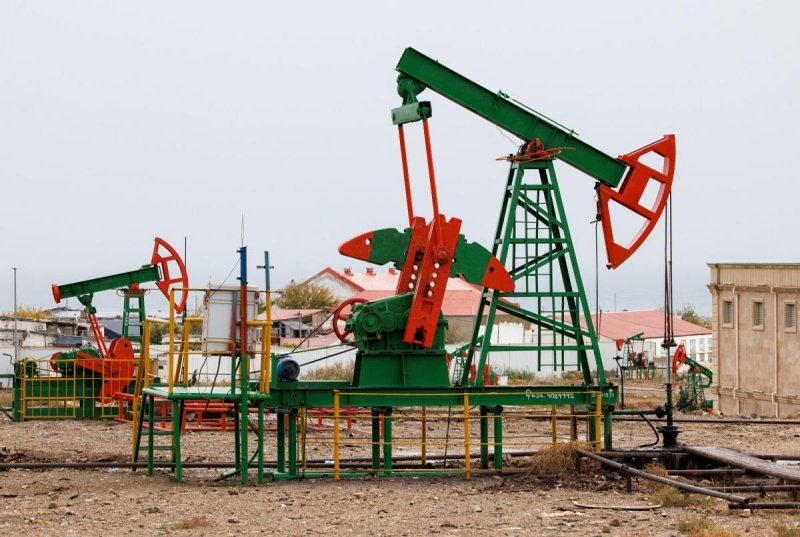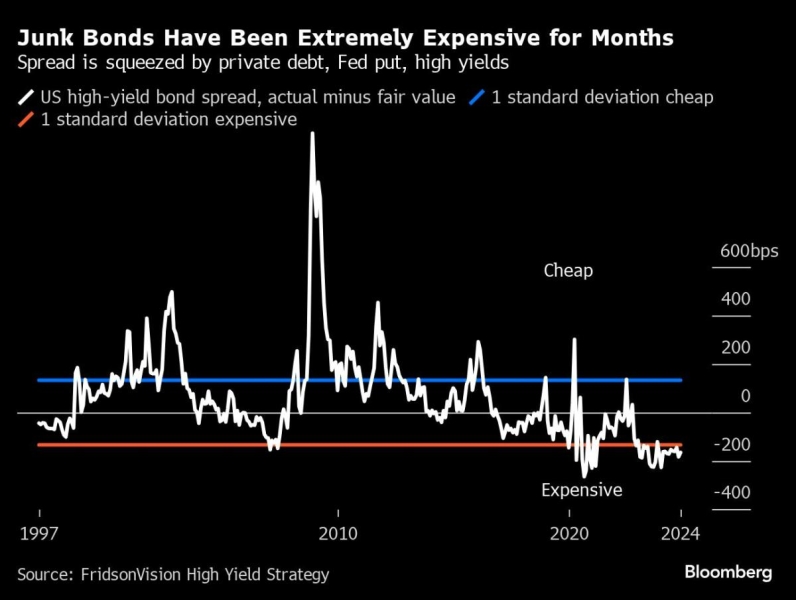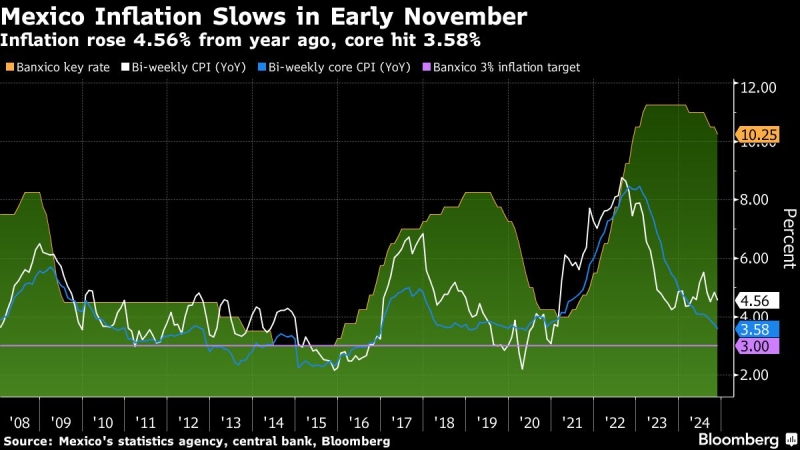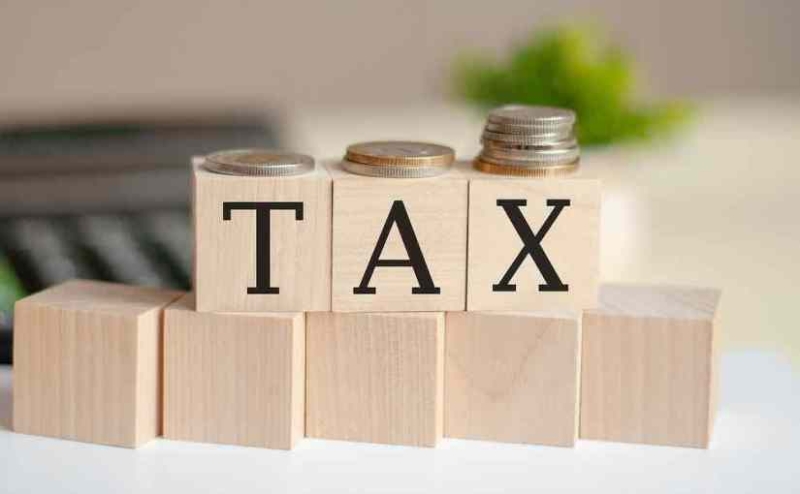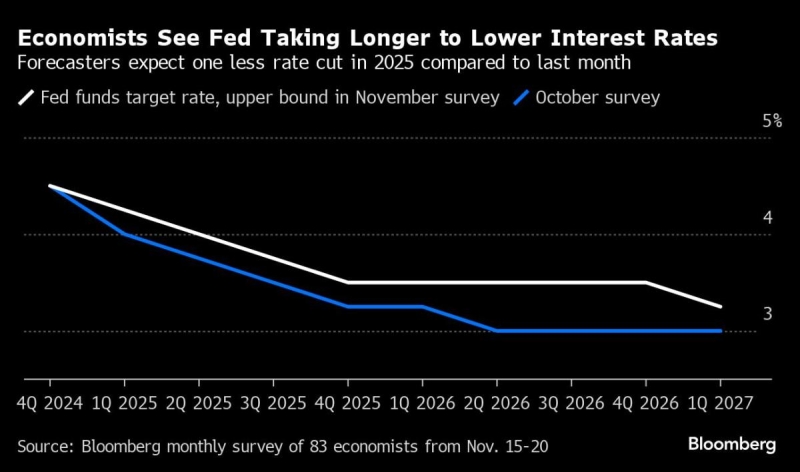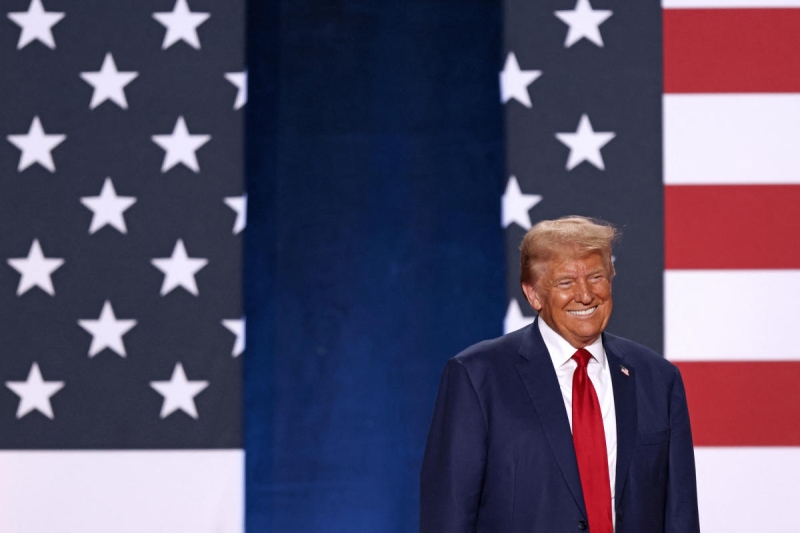
Donald Trump is making dramatic new tariff pronouncements that one could be tempted to dismiss as bluster, but it is increasingly clear that he needs a titanic level of duties to fulfill the promises of his second-term agenda.
"I'm gonna put a 100, 200, 2000% tariff," he proclaimed Tuesday afternoon in Chicago on the subject of auto imports, promising "the highest tariff in history."
At the event at the Economic Club of Chicago, he also floated the idea of across the board tariffs as high as 50% in order to immediately force companies to relocate.
But a significant fraction of that bravado may actually be needed if he wins in November and wants to pay for everything else he wants.
"There's actually a logic to the tariffs for his other policy goals," said Brendan Duke, a left-leaning economist at the Center for American Progress who has studied the potential economic effects of the tariffs.
"It helps him with his math problem" on issues like paying for his wide array of tax cut promises, he added.
Indeed, a recent detailed analysis of Trump's plans from nonpartisan Committee for a Responsible Federal Budget (CRFB) found that one of the only sizable offsets to his over $10 trillion in campaign trail promises are tariffs — which are projected to raise about $2.7 trillion.
And in the report's rosiest possibility — with Trump's tariffs raising more and his programs costing less than many expect—a Trump agenda adds a relatively manageable $1.45 trillion to the national debt because of that tariff revenue. More likely is a shortfall in the neighborhood of $7.5 trillion.
What all scenarios point to a likelihood that Trump may have little to no motivation to veer away from tariffs in office.
Former President and Republican presidential candidate Donald Trump arrives for a town hall event in North Carolina on October 4. (LOGAN CYRUS/AFP via Getty Images) (LOGAN CYRUS via Getty Images)
"People think he's a deal maker," added Mary Lovely, a senior fellow at the Peterson Institute for International Economics who has done her own deep dives on the economic ripples of renewed trade tensions .
Lovely adds that some common assumptions — such as that Trump is using bluster as a negotiating tactic or that he doesn't really mean much of what he says — rely on "really revisionist history" of how Trump has tended to approach trade issues.
Why tariffs are 'most important element' of Trump's plans
Tariffs are, of course, taxes that are paid by importers at points of entry with the additional costs levied on these companies often passed on to consumers in the US.
Lovely and a colleague Kimberly Clausing have run the numbers and found that even a partial implementation of Trump's ideas — 60% duties on China and 10% on other trading partners — could cost a typical middle-class household at least $1,700 each year in the form of higher priced goods.
Other estimates come in even higher (Duke pegs the annual number at $2,500 for a typical family in that scenario and $7,500 if across the board tariffs reach 50%) but that has done little to dissuade Trump, who doubles down on tariffs at nearly every opportunity.
Tariffs are "perhaps the most important element of my plan to make America extraordinarily wealthy again" Trump said during a recent speech in Detroit, suggesting that duties should be raised to create reciprocity with other countries' higher duties.
"We generally don't charge tariffs," he added, promising that would soon change and that his extensive trade wars during his first term in office simply "started the process."
Duke calculates that what Trump is proposing now is at least 10 times what he levied last time. He said Trump's plans are "very real" in large part because of a coming debate on taxes that is likely to consume Washington in 2025, ahead of the expiration of major parts of the 2017 Tax Cuts and Jobs Act.
"What I could imagine happening is Trump makes a bunch of tariff announcements," Duke noted, followed by his economic team claiming the duties would raise an outsized amount of revenue in the coming years.
"And what's really appealing about that for Congressional Republicans," he added, is "they can just cite the offset [and vote for tax cuts] but they don't have to enrage the businesses in their district" by voting for the tariffs themselves.
Massive economic ripples
If such a scenario comes to pass, Duke and Lovely and an array of other experts calculate that the economic effects would be sizable.
A research note from Goldman Sachs recently crystallized the macro-economic worries of Trump's plans.
Trump aides have dismissed the analysis as overly influenced by politics, but the Goldman analysts based their analysis on Trump only actually implementing a sliver of his promises. They suggested his tariff increases on China would amount to 20 percentage points (Trump has repeatedly promised 60%) and that a universal tariff is not their base case.
They nonetheless project a Trump win would impact GDP growth by -0.5 percentage points in large part because of a "hit to growth from tariffs."
Vice President and Democratic presidential nominee Kamala Harris waves at the Erie International Airport in Erie, Pa., on Monday. (DUSTIN FRANZ/AFP via Getty Images) (DUSTIN FRANZ via Getty Images)
Lovely, going further, said tariffs in place anywhere near the levels Trump is discussing would mean a massive fall in imports and widespread trade disruptions to the point where "you're likely to have a recession."
Trump's approach to that topic on the campaign trail has been simply to wave away the concerns.
"It's gonna have a massive effect, a positive effect," he declared Tuesday during his stop in Chicago. He added an attack on his skeptical questioner during that event, Bloomberg Editor-in-Chief John Micklethwait, calling him "totally wrong."
The question is whether it will all be factored into voter decisions.
"It seems to me that the point for the Harris campaign will be talking about just how monumental the changes are that Trump is talking about," conservative radio host (and Trump critic) Michael Medved said on a recent episode of Yahoo Finance's Capital Gains podcast during a discussion of Trump plans from tariffs to the mass deportation of migrants.
Plans from Trump where 'I don't need Congress'
Further clouding the waters are complicated issues around tariff implementation. But there is a bottom line that is often obscured: Trump may be able to levy much of his tariffs plans without outside input.
Trump aides have spent years exploring new avenues to help a re-elected Trump implement tariffs without Congress, where many tariff-skeptical Republicans still reside.
Former Trade Representative Robert Lighthizer and other Trump allies have publicly discussed options such as a little-known 1977 law called the International Emergency Economic Powers Act that could implement at least some of his tariffs quickly — and at higher levels than in his previous term.
The main question if he takes that route, trade experts have told Yahoo Finance, is whether the courts intervene.
Trump could also use national security tariff authority under Section 232 of the Trade Expansion Act of 1962 or Section 301 of the Trade Act of 1974. Those provisions are more legally tested means to levy tariffs without Congress (and both Trump and Biden have done exactly that in recent years).
Then-Trade Representative Robert Lighthizer speaks next to Then-President Donald Trump in the Rose Garden of the White House in 2018. (JIM WATSON/AFP via Getty Images) (JIM WATSON via Getty Images)
Indeed, at a recent roundtable Trump offered of his tariff plans "I don't need Congress, but they will approve it."
"I'll have the right to impose them myself if they don't," he added at the event in Pennsylvania.
Ben Werschkul is Washington correspondent for Yahoo Finance.
